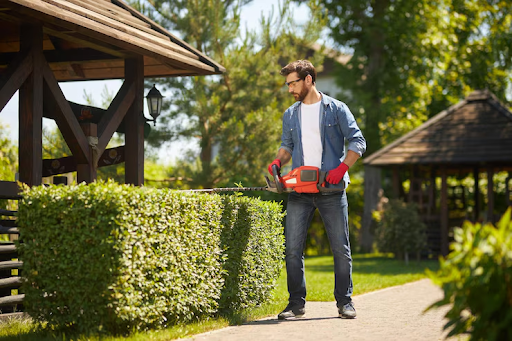Not only does a well-maintained landscape design improve your home’s curb appeal, but it also provides you and your family with an inviting and enjoyable outdoor environment. However, maintaining the landscape of your house requires effort and dedication.
There are several ways to maintain the landscape of any area. However, here in this article will look at some crucial tips to help you preserve the beauty of your landscape and keep it looking its best throughout the year.
1. Regular Lawn Care
The bedrock of an attractive landscape starts with a vigorous and neatly trimmed lawn. To keep a rich green carpet, you need to implement regular lawn care practices. This includes mowing grass at the right height, watering deeply and infrequently to encourage root growth as well as fertilizing for essential nutrients.
In addition, make sure that you occasionally aerate the soil to improve drainage and reduce compaction. By remaining sensitive to lawn maintenance chores, one can create an outdoor outdoor space where one can relax or enjoy leisure activities.
2. Pruning and Trimming: Shaping and Sculpting Your Plantings
Regularly pruning and trimming are important in shaping and sculpting plantings so they stay healthy, look good, and display structural integrity. Prune shrubs and trees to remove dead or diseased branches, promote air circulation, and give way to new growth.
For better residential landscape management, cut hedges and bushes to keep edges neat and defined. Take away any extra growth blocking walkways or windows. Use sharp, clean pruning tools to cut cleanly and not hurt plants. Good upkeep makes landscapes look much better and keeps plants from overgrowth.
3. Weed Control: Keeping Unwanted Invaders at Bay
Weed can take over landscapes fast if not stopped. They battle wanted plants for water, food, and sunlight. You must fight weeds often to keep them away and landscapes healthy and nice-looking. Check your landscape for weeds often. Pull weeds by hand or use weed control products quickly.
Put mulch around plants and trees, suppressing weeds and preserving moisture. Stay proactive against weeds, maintaining your landscape’s beauty. The weed besides damaging the beauty of the house also paves the way for the safety of pests that grow there and enter the house.
4. Seasonal Maintenance: Adapting to Changing Conditions
As seasons change, maintaining your landscape shifts. Spring tasks include fertilizing, planting, and mulching to rejuvenate after winter. Summer focuses on watering, pruning, and pest control for plant health in heat. Fall preparation like raking leaves, cutting back perennials, and frost protection gets plants ready for winter. Winter offers a break to plan and get ready for springtime growth. But other seasons require more work.
Summer days mean watering plants often, pruning many branches and battling pests. That keeps plants thriving in hot weather. Autumn necessitates raking fallen leaves, cutting perennials to ground level, and shielding tender plants from the cold. You need to adapt your maintenance efforts to climate changes. By doing so, you can keep your landscape vibrant and lovely all year round.








